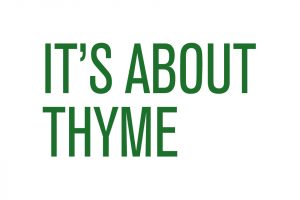Recently while doing some research for our new medicinal / healing garden, my wife shared an article with me on the Moringa tree, and the more I read, the more fascinated I became.
First of all, the Moringa, also known as the ‘Drumstick Tree,’ is nearly entirely edible. It can grow with little water, has multiple times the amount of nutrients as oranges, carrots and milk, and grows very well in regions of malnutrition. Could this impressive tree, Moringa oleifra, solve the world’s food crisis? Many are convinced it will.
The Moringa is a distant relative of cabbage and papaya. Its roots taste so much like its cousin horseradish, that sometimes people called it the horseradish tree.
The fruit, a popular Indian vegetable, looks like a cross between an okra and a pole bean, and has the flavor of asparagus. The tree’s cooked flowers mimic mushrooms in taste, while the leaves hint at spinach and lettuce. Its immature seeds are used like peas, and if you fry them when mature, they resemble peanuts.
In fact, it’s hard to find a part of the Moringa tree that isn’t edible. Even the bark is sometimes taken internally for diarrhea. Locals consider it a living pharmacy.
The Moringa has proven to be a multi-purpose arsenal that dispenses some of the best secrets nature has to offer. For centuries it has been used in ancient Indian ‘Ayurvedic’ herbalism to treat a host of ailments such as anemia, bronchitis, tumors, scurvy, and skin infections.
Drought hardy and disease resistant, the Moringa tree is a godsend during the dry season, when little food is available. The leaves offer a spectrum of nutrition, rich in vitamins A, B, and C, as well as protein, calcium, and iron.
They are so nutritious, in fact, that they contain more vitamin A than carrots, more vitamin C than oranges, more calcium than milk, more iron than spinach, more potassium than bananas, and more protein than either milk or eggs! A traditional item in pickles and curries, the raw leaves are also perfect for salads.
Like the leaves, the flowers too are edible when cooked, packed with calcium and potassium. As a bonus, they are incredibly fragrant, and help support native bee populations.
The ‘drumsticks’ contain the nine essential amino acids that humans must obtain exclusively from their diet. Hidden within the drumsticks are even more remarkable seeds. Loaded with protein, they also contain special non-toxic polypeptides that act as natural Brita filters.
When ground into powder and mixed with water, they cause sediments to clump together and settle out. Then when strained through a cloth, they provide cheap access to clean water. Amazingly, just two seeds are enough to purify a liter of dirty water.
In turn, the seeds themselves yield valuable yellow oil called ben oil. Sweet, clear, and odorless, it doesn’t spoil easily – perfect for perfumes, cosmetics, and lubrication. It’s also used for cooking due to its high levels of healthy unsaturated fats.
In one serving of Moringa leaves, you can find: 22% daily value of vitamin C, 41% daily value of potassium, 61% daily value of magnesium, 71% daily value of iron, 125% daily value of calcium, 272% daily value of vitamin A, 92 nutrients, 46 antioxidants, 36 anti-inflammatories,18 amino acids, and 9 essential amino acids.
For such a versatile tree, it’s almost hard to believe that the Moringa can be grown easily via seeds or cuttings all around the world, including here in Hays and Travis counties.
Happy gardening everyone!
If you have a question for Chris Winslow, send it via email to iathyme@yahoo.com.Or mail a postcard to It’s About Thyme: 11726 Manchaca Road, Austin, TX 78748 www.itsaboutthyme.com





